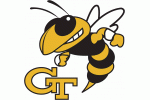UNC’s Final Four matchup with an unfamiliar foe has some unique qualities

In the second NCAA Tournament Final Four matchup of the evening, the North Carolina Tar Heels will take on the winners of the Midwest region, #2 seed Oregon. The PAC-12 regular season winners have gotten to the Final Four on the back of some hot shooting, not having shot under 40% from beyond the arc the past three games. Their outside-in style of play promises to clash wildly with the Tar Heels’ inside-out philosophy, which provides endless possibilities for this game.
Tyler Dorsey has been the big name for the Ducks in the Tournament, having scored over 20 points in every tournament game so far at a ridiculous 58% clip from beyond the arc. This obviously isn’t sustainable over a long period of time, but both the beauty and the harshness of March is that it doesn’t have to be. Dorsey’s hot hand could last for just two more games and the Ducks could find themselves cutting down the nets.
The Tar Heels, fortunately for them, have faced a similarly prolific shooter already this tournament in Kentucky’s Malik Monk, and were able to severely limit him until the final minute through dedicated defense that involved staying on him at all times, not helping on the drive as is standard Carolina strategy. Similar measures may be taken against Dorsey and against Oregon in general, as until the tournament, Dorsey was not even their most dangerous player. That honor would go to Dillon Brooks, and though he has not been at his best, a dangerous shooter like him could get hot at a moment’s notice.
Oregon as a team shoots a lot of three-pointers, and though that hasn’t been the case in many of their tournament games, it was definitely the case in their Elite Eight victory against overall #1 seed Kansas. UNC needs to be careful not to fall behind early from beyond the arc, as well as being aware that a seemingly large lead can evaporate very quickly with lackadaisical perimeter defense. This is less of a problem playing Oregon than, say, Duke, because Oregon also oddly plays at a rather slow tempo. Their defense (see below) could be argued to warrant it, but it also arguably hamstrings their offensive capability. All the same, UNC needs to prevent Oregon as a team from heating up, and in doing so, take away their primary weapon.
Oregon has also made itself known with its team defense. In terms of efficiency, they don’t quite stack up to the other side of the Final Four, where Kenpom’s first- and second- ranked defensive teams will be going head to head. Oregon still, however, ranks a very respectable 18th (the Heels, for reference, are 17th). The more troubling aspect of Oregon, however, is their brand of defense, which is very... pesky. Oregon ranks near the top of the country in both steals and blocks, constantly getting their hands in the way of what their opponents are trying to do. Their shot blocking is not quite as good as it was during the regular season, as they have lost premier rim protector Chris Boucher to injury, but they are still a force.
This game may well be decided by the matchup at the “4” spot. While UNC employs a more traditional lineup of three perimeter players and two post players, Oregon has opted for a more new-generation look of four perimeter players and just one big man. The big man in question, Jordan Bell, has had a good season and is the team’s best rebounder with a total rebounding percentage of 17.4%. Both of UNC’s centers, Kennedy Meeks and Tony Bradley, are superior rebounders, so there is certainly a notable chance that Oregon will be overpowered in the paint.
At the other post spot, however, UNC post players have been uncomfortable at times guarding the perimeter, which they will have to do against Oregon. Look for Luke Maye, UNC’s stretch big, to get extended minutes to help with this, or perhaps for some spurts of UNC small ball. On the other hand, UNC’s forwards, especially Isaiah Hicks, may be able to take advantage of Oregon’s smaller players on the offensive end.
UNC wins if:
- They play tight perimeter defense, forcing tough, low-percentage shots
- They take advantage of matchups inside consistently
- Their own outside shot is falling at an acceptable rate
Oregon wins if:
- They continue to be red-hot from beyond the arc
- They successfully deny the ball from entering the post
- They force a lot of turnovers
Score Prediction: UNC 78, Oregon 71



















